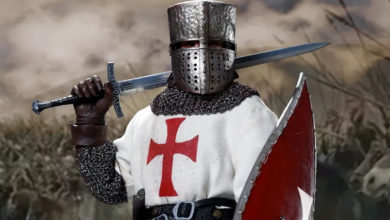Podcast: Play in new window | Download
Have you ever paused to ponder the history of your morning cup of tea? Let’s take a leap back in time to ancient China, around 2737b.c. Legend has it that Emperor Shennong, a skilled ruler and herbologist was the first to discover tea. Picture this, while boiling water in his garden, leaves from a wild tree were carried by the wind, and fell into his pot. Intrigued by the resulting infusion, Shennong decided to taste it, finding it refreshing and revitalising.
Back in those days, tea wasn’t the everyday beverage we know and love. Instead, it was initially used for medicinal purposes. Shennong documented the effects of various herbal concoctions, including tea, in a book, which served as a cornerstone for traditional Chinese medicine. Thus, the serendipitous discovery of tea by Emperor Shennong marked the beginning of a long and fascinating journey for this beloved beverage.
From its humble beginnings, tea embarked on a journey that would span continents. The leafy brew that was once a well-kept secret of China soon found its way to foreign lands via the Silk Road and sea routes. The Silk Road, that ancient network of trade routes became the conduit for tea’s journey westwards. An exotic elixir from the East, tea was a coveted commodity among the merchants plying this route. It wasn’t long before the aromatic infusion began to make its presence felt in the Middle East and from there it seeped into the cultural fabric of Russia and Persia, and then in the sixth century, tea made its way to Japan, brought by Buddhist monks who had been studying in China. They recognised the potential of tea as an aid to meditation, and it soon became an integral part of their religious ceremonies. The Japanese tea ceremony, a meditative and aesthetic practice is a testament to this enduring connection.
Now shifting our gaze to the 16th century we find tea making a grand entry into Europe. The Dutch and British East India companies, those titans of trade, played a significant role in introducing this exotic beverage to the European palette. Tea quickly became a symbol of status and sophistication and the ritual of afternoon tea took root.
Across the Atlantic, tea was making waves too, albeit in a different manner. The Boston Tea Party, a political protest in the late 18th century saw American revolutionaries dump chests of tea into the harbour, a defiant act against British taxation. This incident, steeped in tea, was a turning point in American history, setting the stage for the American Revolution. Tea therefore played a pivotal role, not just in trade but in shaping the course of world history.
Tea, once a luxury good, has now become a household staple around the world.
As we journey into the modern era, we find the British Empire with a thirst for tea that could not be quenched by China alone. In the early 19th century the British began establishing tea plantations in the fertile lands of India and Sri Lanka. Through trial and error and a dash of good old British determination, the once exotic plant thrived in these new territories. This expansion allowed tea to evolve from a luxury good into a staple of the common British household and subsequently households around the globe. The British Empire in its quest for a warm cuppa had inadvertently democratised tea making it accessible and affordable to all.
Meanwhile across the pond in the early 20th century, an American merchant by the name of Thomas Sullivan made a small yet significant innovation that would change how we consume tea. The invention of the tea bag, a simple silk pouch containing tea leaves intended for ease of shipping quickly became a convenient and popular method of brewing. No longer did one need to deal with loose leaves, and tea could be enjoyed with minimal fuss and mess.
Fast forward to the 1980s in Taiwan, a new tea craze was brewing, one that would take the world by storm. Bubble tea, a sweet and refreshing concoction of tea, milk, sugar and chewy tapioca pearls emerged as a popular street food. Its unique blend of flavours and textures has since captured the hearts of millions worldwide further solidifying tea’s place in global culture.
Throughout all these changes the importance of tea in various cultures has remained, from the Japanese tea ceremony, emphasising mindfulness and respect to the British afternoon tea, a symbol of hospitality, tea continues to bring people together. Moreover, the humble tea leaf has found new popularity in the health and wellness sphere. Packed with antioxidants, tea is hailed as a healthful beverage that promotes wellbeing. So the next time you sip your tea remember the centuries of history and the journeys that brought this delightful brew to your cup.
Podcast: Play in new window | Download





